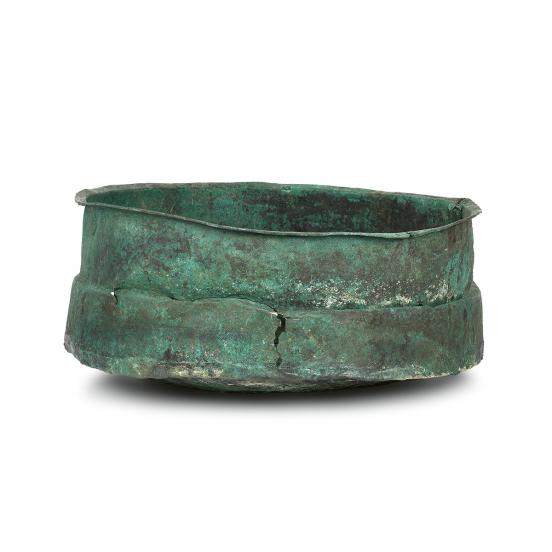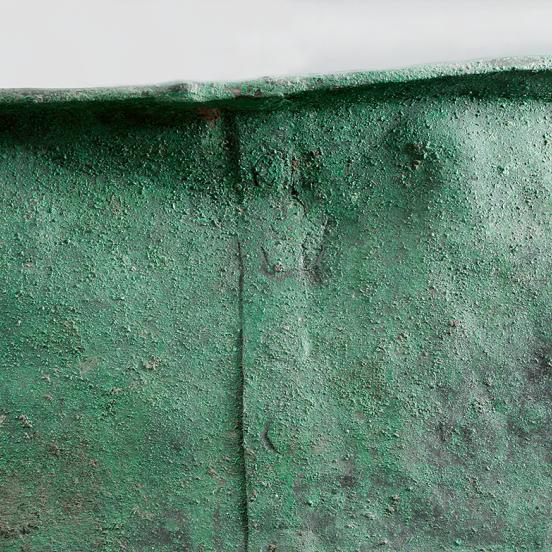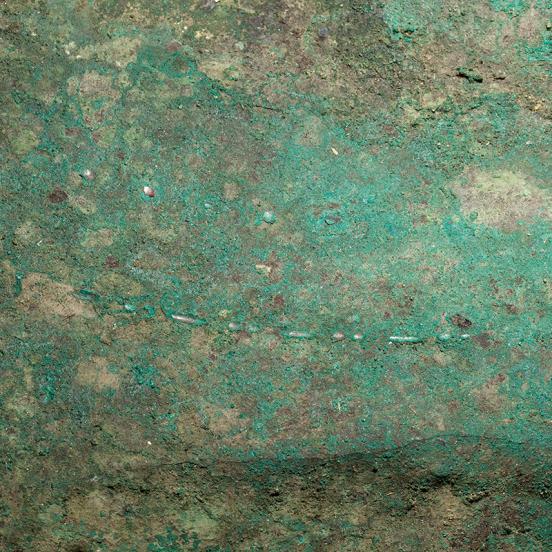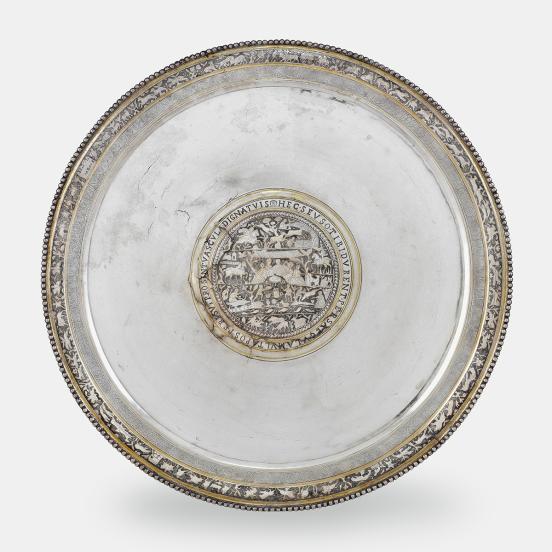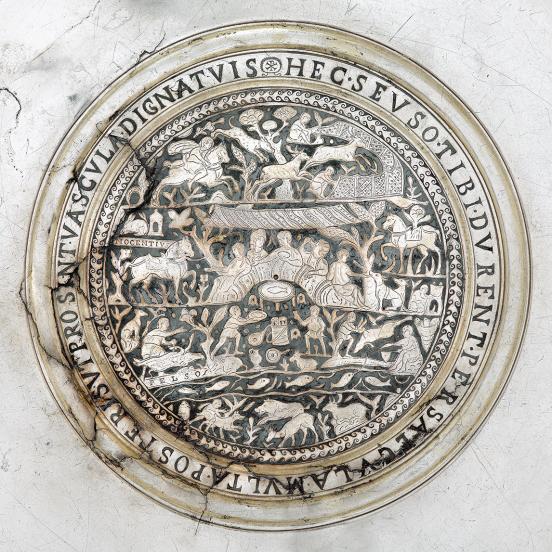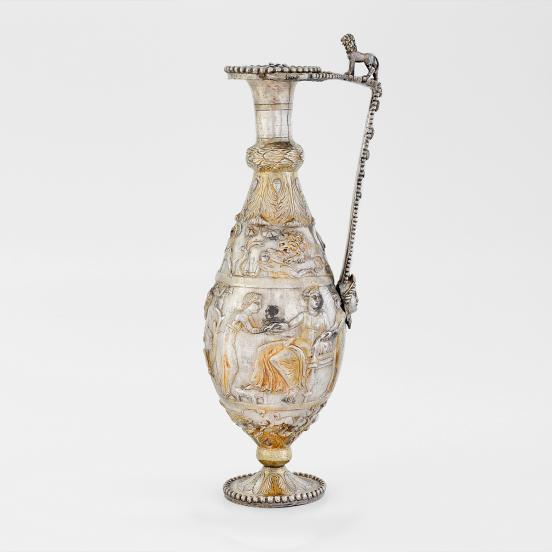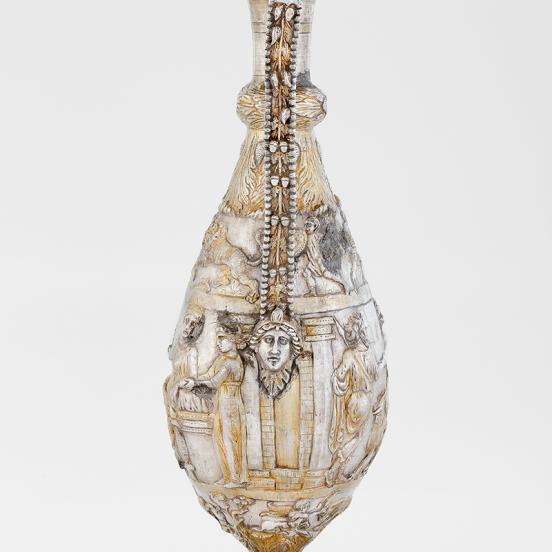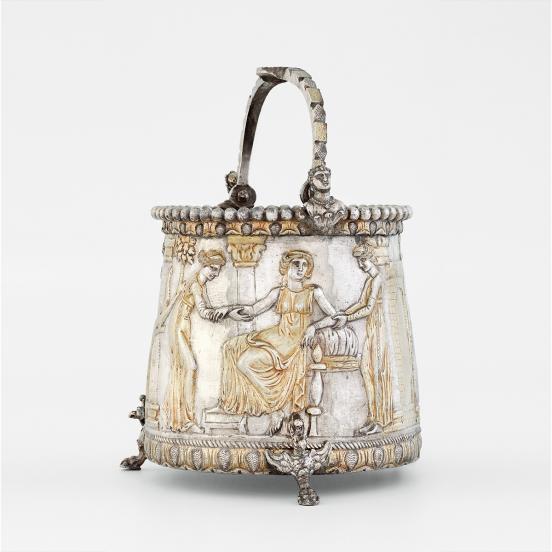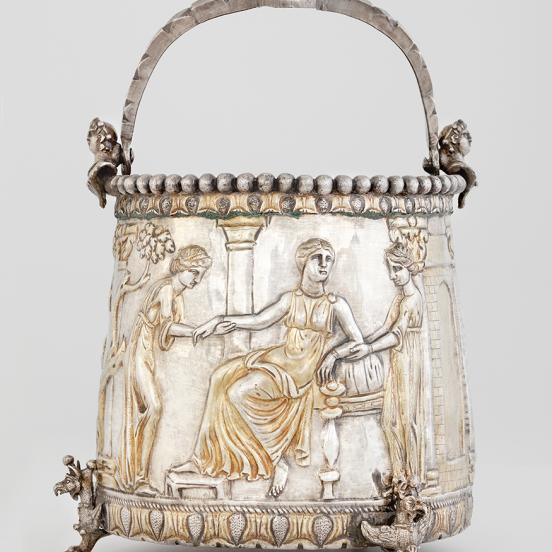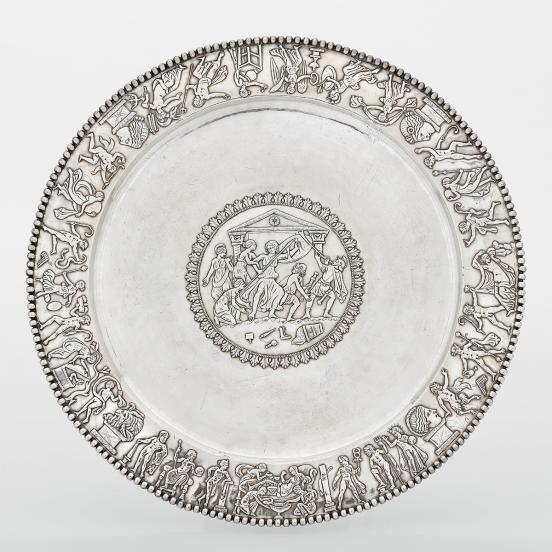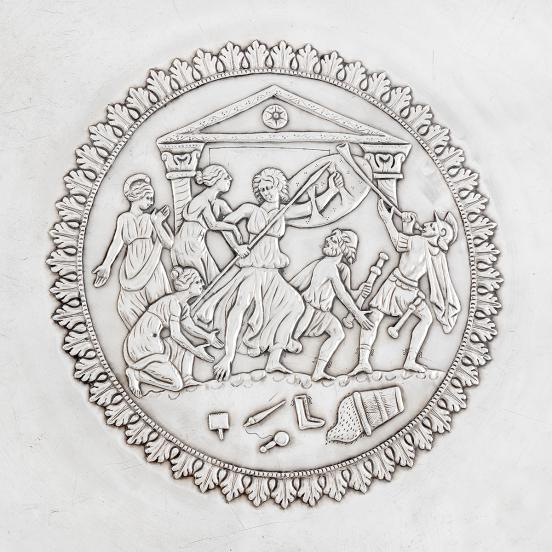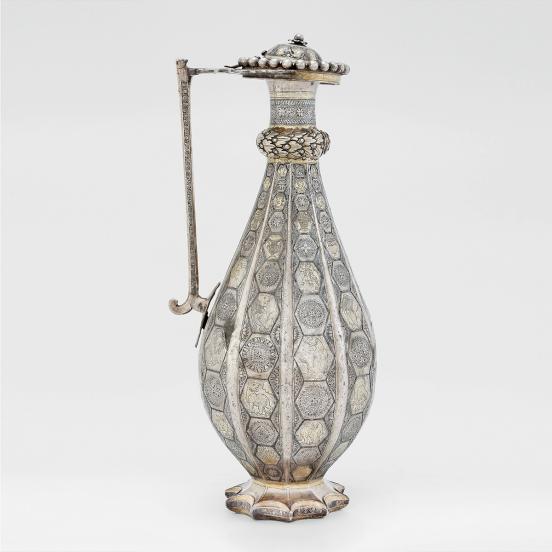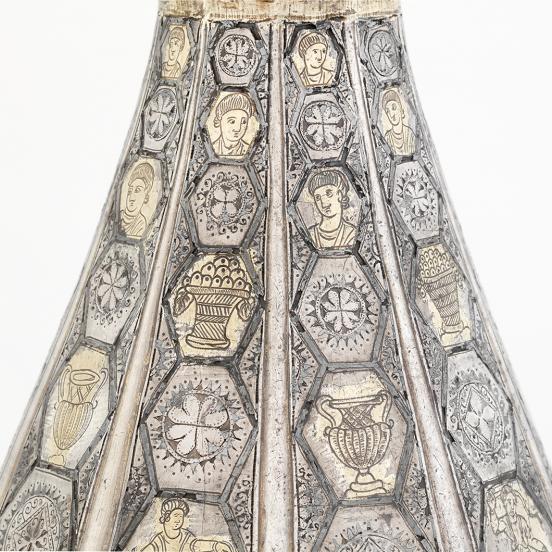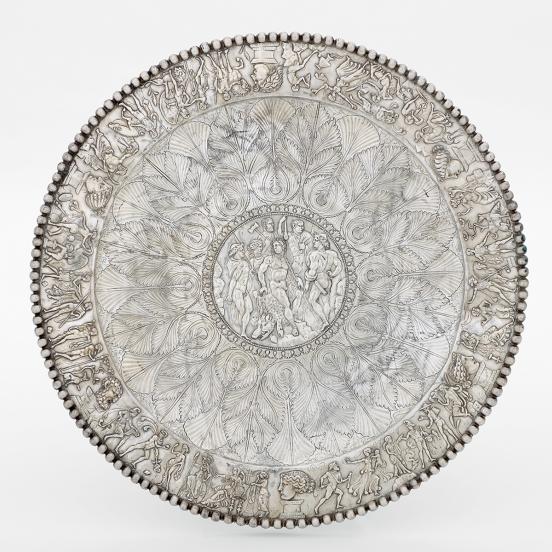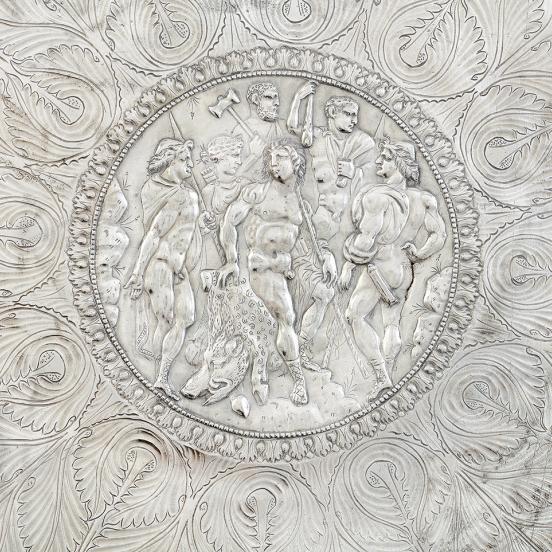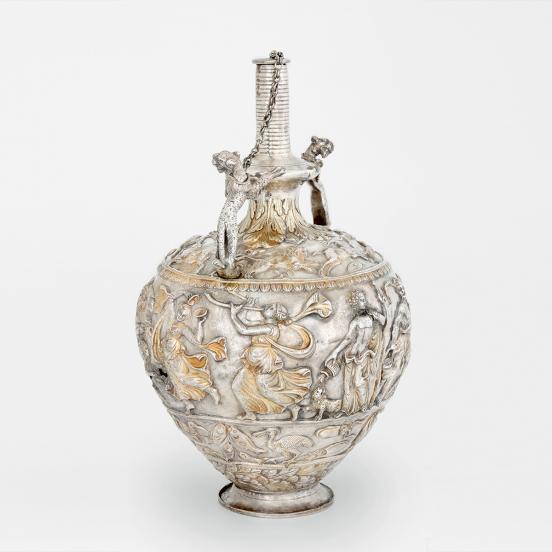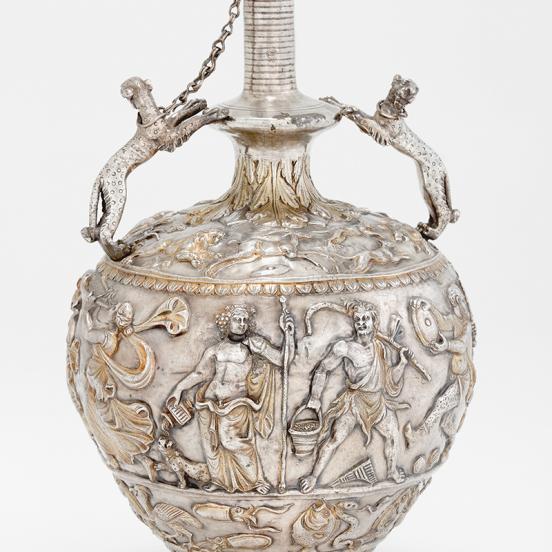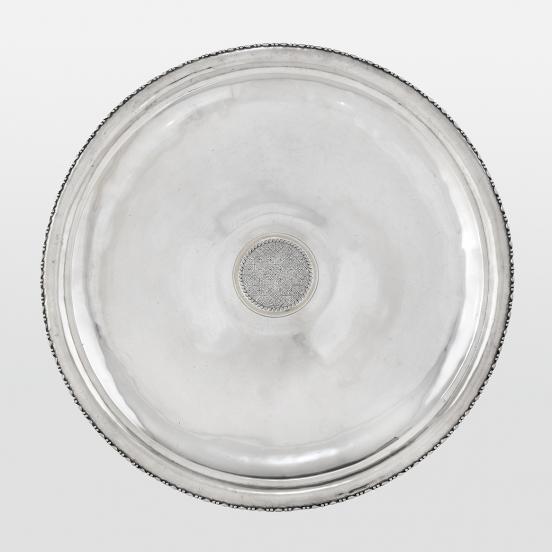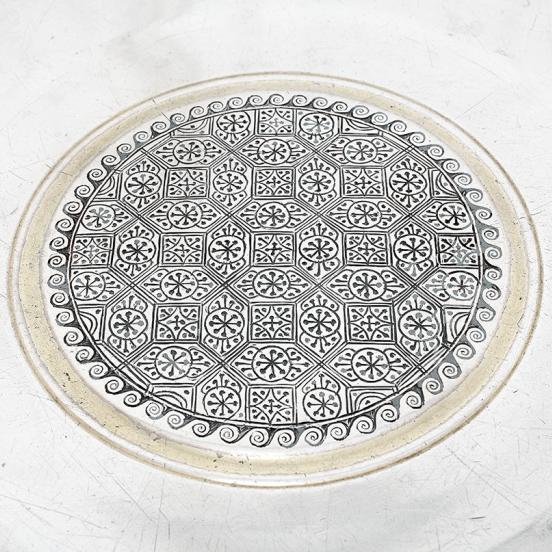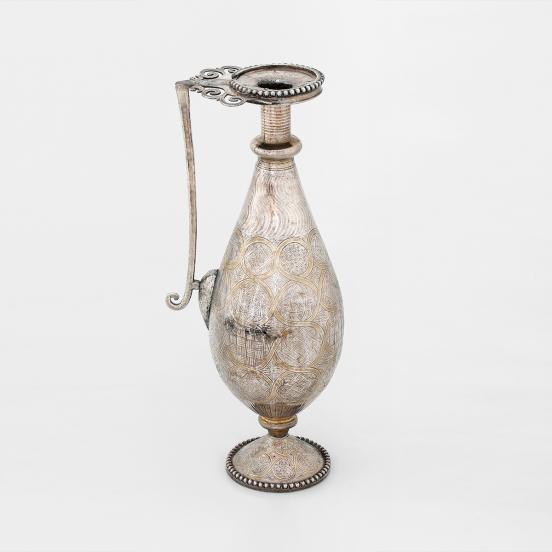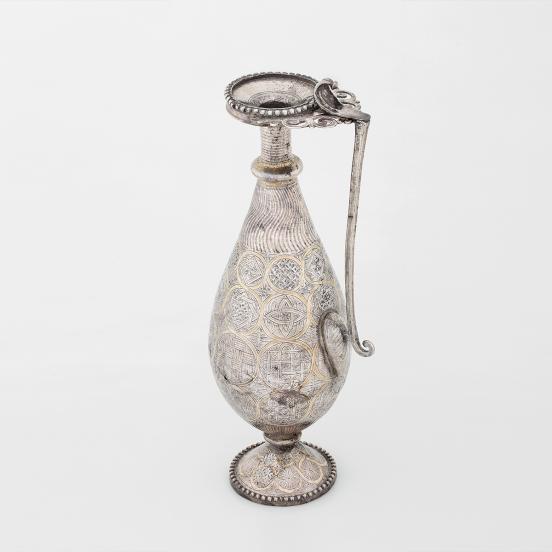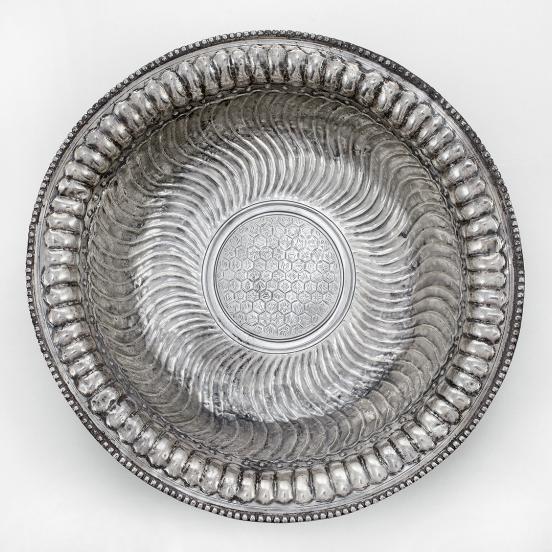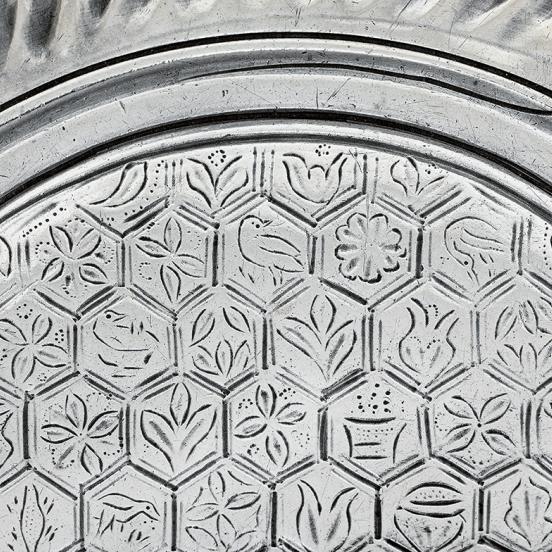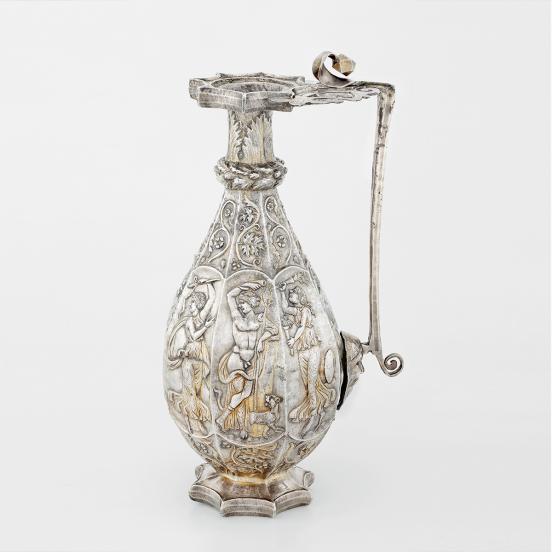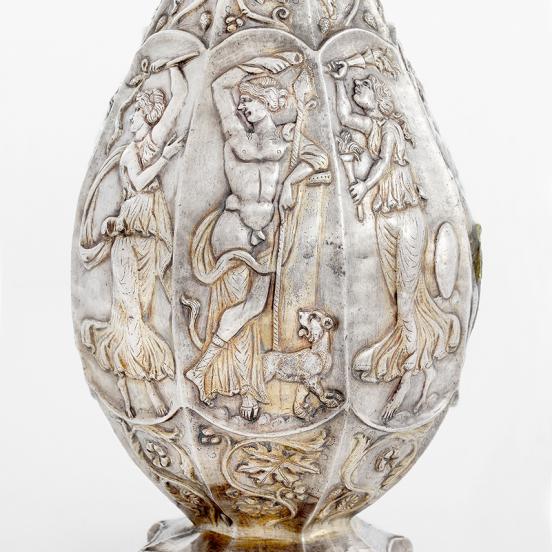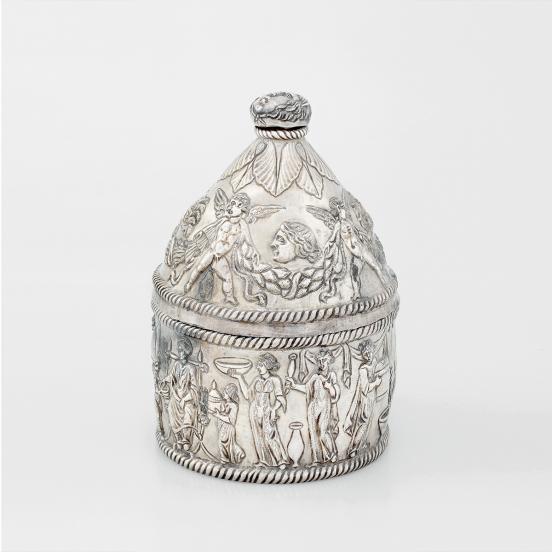The Cauldron
The silver vessels of the Seuso treasure were hidden in this copper cauldron. Impressions of rims left in the inside indicate that the four large platters were laid turned downwards on top of one another at the bottom of the cauldron and the smaller vessels placed on top.
The side of the cylindrically shaped vessel with a stepped profile was made from two copper sheets, which were hammered and riveted together. The bottom, originally curved, was made from a third sheet, which was joined to the side by it being crenellated and soldered. Its shape and manufacturing technique suggest that it belongs to a type widespread in the territories along the Rhine and the Danube in the Roman Empire. The most southerly examples are known from the vicinity of Lake Balaton in Pannonia. It was probably made in the 3rd or 4th century. The fifty-odd ancient repairs with patches on the cauldron indicate that it must have been used for a long time before it was used to conceal the vessels of the Seuso treasure.
The cauldron has an outstanding significance in the research of the hoard because the remains of soil and the corrosion products on its surface reveal information on the original place of concealment, while the carbonized remains provide information about the time when the cauldron was used and thus the time of hiding of the treasure.
Diameter: 83.5 cm
Height: 32.5 cm
Material: copper of more than 98% purity

